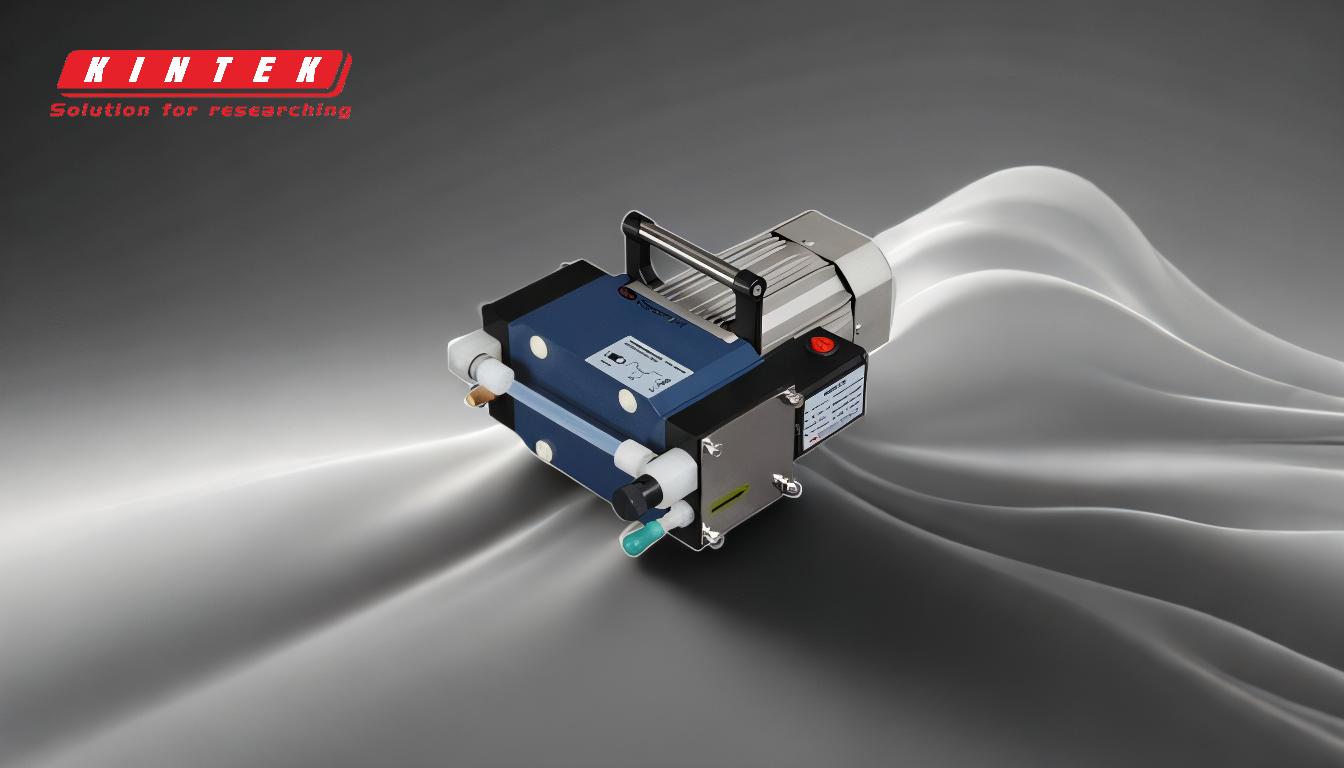A diffusion pump is a specialized vacuum pump designed to achieve extremely low pressures, often referred to as high vacuum levels, which cannot be attained by mechanical pumps alone. It operates on the principle of vaporizing oil, creating a high-speed vapor jet that captures and removes gas molecules from a vacuum chamber. This process allows the pump to generate pressures in the range of 10^-2 Pa or lower, making it essential for applications requiring high vacuum conditions, such as semiconductor manufacturing, research laboratories, and space simulation chambers. The pump works in conjunction with mechanical pumps, which handle the initial stages of pressure reduction, while the diffusion pump takes over to achieve the final, ultra-low pressures.
Key Points Explained:

-
Purpose of a Diffusion Pump:
- The primary purpose of a diffusion pump is to generate a high vacuum, achieving pressures lower than what mechanical pumps or booster systems can produce alone. This is critical for applications requiring ultra-low pressure environments.
- It is particularly useful when the desired vacuum level is below 10^-2 Pa, as mechanical pumps lose efficiency at such low pressures.
-
Working Principle:
- The diffusion pump operates using two key components: diffusion pump oil and a heater.
- The heater heats the boilerplate, causing the oil to vaporize. The rising oil vapor is compressed through a vertically tapered stack with jet openings, creating a high-speed vapor jet.
- This vapor jet forms an "umbrella" of vapor that captures gas molecules from the vacuum chamber. The captured molecules are then directed downward by the condensing coils on the pump’s exterior, where they are released at the base of the pump.
- The differential pressure between the top (connected to the vacuum chamber) and the bottom of the pump creates the high vacuum environment.
-
Activation Range:
- The diffusion pump is activated in the pressure range of 10 to 1 microns (1 micron = 10^-3 Torr or ~0.133 Pa). It is not effective at higher pressures and relies on mechanical pumps to reduce the system pressure to this range before it can operate efficiently.
- Once activated, it can pump down to high vacuum levels (10^-2 Pa or lower).
-
Advantages Over Mechanical Pumps:
- Mechanical pumps are limited in their ability to achieve high vacuum levels due to their design and operational constraints. Diffusion pumps, on the other hand, excel in this range by using the vaporization and condensation of oil to trap and remove gas molecules.
- Diffusion pumps do not have moving parts, which reduces wear and tear and increases reliability in high vacuum applications.
-
Applications:
- Semiconductor Manufacturing: High vacuum environments are necessary for processes like thin-film deposition and etching.
- Research Laboratories: Used in experiments requiring ultra-low pressures, such as particle physics and material science.
- Space Simulation Chambers: Simulates the vacuum of space for testing satellites and spacecraft components.
-
Integration with Mechanical Pumps:
- Diffusion pumps are typically used in conjunction with mechanical pumps. The mechanical pump reduces the system pressure to the range where the diffusion pump can operate effectively (10 to 1 microns).
- This combination ensures efficient and cost-effective vacuum generation across a wide pressure range.
-
Oil Selection and Maintenance:
- The performance of a diffusion pump depends heavily on the quality and type of oil used. The oil must have a high boiling point and low vapor pressure to ensure efficient vaporization and condensation.
- Regular maintenance, such as oil replacement and cleaning of condensing coils, is essential to maintain optimal performance and prevent contamination.
-
Limitations:
- Diffusion pumps cannot operate at atmospheric pressure and require a pre-vacuum (provided by mechanical pumps) to function.
- They are sensitive to backstreaming, where oil vapor can enter the vacuum chamber, potentially contaminating sensitive processes. Proper design and maintenance can mitigate this issue.
By understanding these key points, equipment and consumable purchasers can make informed decisions about when and how to use diffusion pumps, ensuring they meet the specific vacuum requirements of their applications.
Summary Table:
| Key Aspect | Details |
|---|---|
| Purpose | Generates high vacuum levels below 10^-2 Pa, essential for ultra-low pressure environments. |
| Working Principle | Uses oil vaporization to create a high-speed vapor jet, capturing gas molecules. |
| Activation Range | Operates between 10 to 1 microns; requires mechanical pumps for pre-vacuum. |
| Advantages | No moving parts, high reliability, and efficient at ultra-low pressures. |
| Applications | Semiconductor manufacturing, research labs, and space simulation chambers. |
| Maintenance | Requires high-quality oil and regular cleaning of condensing coils. |
| Limitations | Cannot operate at atmospheric pressure; sensitive to backstreaming. |
Need a diffusion pump for your high vacuum needs? Contact our experts today to find the perfect solution!






